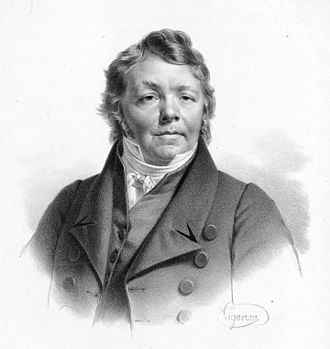Johann Nepomuk Hummel
(14 November 1778 – 17 October 1837)
Austrian composer and virtuoso pianist.
Piano Septet No. 2 in C Major, Op. 114, "Military
Septett Militaire for piano, flute, violin, clarinet, cello, trumpet & double bass (or for piano quintet) in C major, Op. 114, written in 1829.
00:00 - I. Allegro con brio
10:52 - II. Adagio
19:22 - III. Menuetto. Allegro
24:28 - IV. Finale. Vivace
Hummel's so-called ‘Military’ Septet, dating from October 1829, is scored for piano, flute, clarinet, trumpet, violin, cello and double bass, with a quintet arrangement along the same lines as the 1st Piano Septet Op. 74 [uploaded on this channel]. Such was Hummel’s enormous popularity at this time that the work was published virtually simultaneously in London, Paris and Vienna in 1830. Military first movements were all the rage in Vienna at the turn of the nineteenth century, the most celebrated example prior to Hummel’s Septet being Woffl’s Grand Concert Militaire. As befits a piece of this description, the trumpet is called upon in the fast movements to colour the music militaristically, its only real justification for this debut in the chamber music of the Classical period. Its use here can hardly be said to have caught on in a big way, but Hummel's piece undoubtedly inspired Saint-Saëns to use the instrument in his Septet, Op. 65.
- The ebullient Allegro con brio first movement immediately establishes the greater sense of equality between the various instrumental lines. After a piano-dominated opening, all the treble instruments have a go – trumpet, violin, then clarinet – and it is the clarinet which eventually introduces the wistful G major second subject.
- The serenely drawn lines of the Adagio naturally dispense with the services of the trumpet, but...
- the dramatic Beethovenian Menuetto (another scherzo), features the inevitable clarion calls in its gentle middle section, humorously recalled at the very end.
- The various musical elements which combine to make up the Vivace finale, place the piece firmly in its historical context. For whilst there is an undeniable whiff of early Beethoven apparent in the melodic writing (and the throwaway fugato passage near the beginning), the fizzing arpeggiac figurations in the piano part clearly point the way forward to Mendelssohn. At the end, the music dies away enchantingly, in total contradiction to one's natural expectations.
'♣ 음악 감상실 ♣ > - Hummel' 카테고리의 다른 글
| Johann Nepomuk Hummel - Piano Trio 전곡 (0) | 2019.04.22 |
|---|---|
| Johann Nepomuk Hummel - quintet for piano and strings op. 87 (0) | 2018.09.27 |
| Hummel Flute Sonatas (Complete) Grand Rondeau Brillant; Trio for Flute; Cello and Piano (0) | 2018.08.19 |
| Johann Nepomuk Hummel - Sonata in D Major, opus 50 (0) | 2017.11.15 |
| 요한 네포무크 훔멜 - Piano Concerto 모음[1,2,3,4,5,6,7번] (0) | 2017.11.10 |
